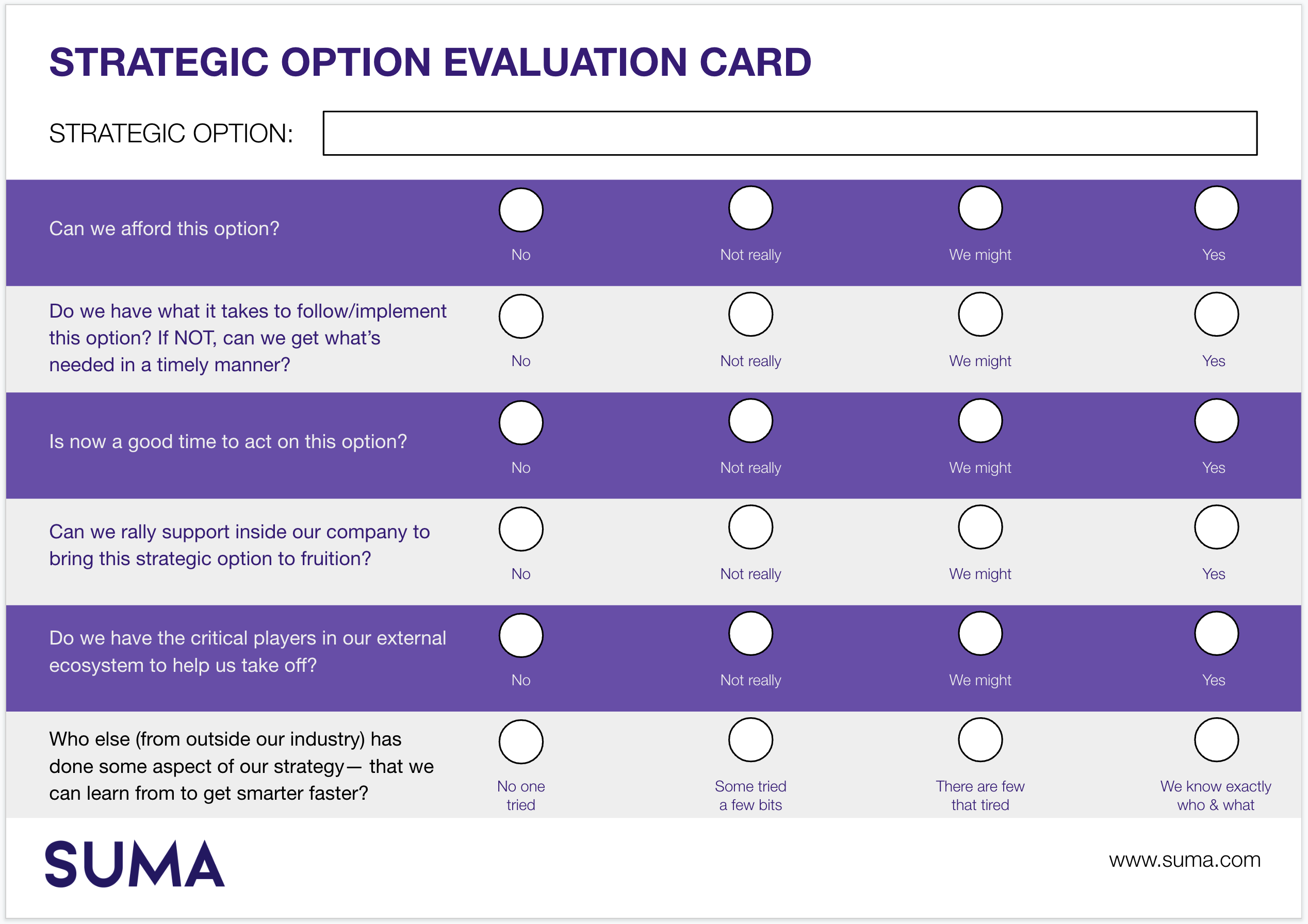One of the most overlooked questions in strategy

Most corporate strategies, if they are developed well (and from our experience that’s a big IF), are great at giving a direction for a company’s efforts for the foreseeable future. In essence they are great at explaining where the company is heading and what it wants to achieve.
When Netflix made the transition towards streaming they were very clear on why they believed that was a good idea. In Reed Hastings’ own words, the strategy was to have one aim and one aim alone: ‘to make the movie experience so much better than the regular video rental that everyone wants to do it’.
Therefore when a strategy is developed (and later decided on) all efforts are geared toward analyzing trends and identifying patterns that will help the company navigate the future. Most questions that are being asked revolve around ‘what is happening in the market?’, ‘What are the upcoming customer trends?’ and ‘What are the macroeconomic factors impacting the company?’.
Although important, the answers to these questions are unfortunately not sufficient when aiming to build a robust strategy and even less so for the implementation of the strategy. A temporal and a capability element need to also be considered when building a company’s strategy. However, at least in our experience, the question of ‘Why is now a good time to act?’ and ‘Why are we in a good position to act now?’ are always overlooked.
In any given context a company can take one of several ways to deliver on its mission and vision promises. These strategic avenues might differ in implementation, timeline and commitment. And usually committing to one automatically shuts the door to all the other ones. Therefore when deciding which of the strategies should be considered, leaders need to carefully take into account the implementation of the strategy too.
In essence when weighing multiple strategic options asking ‘Why now is a good time to act on a specific one, to the detriment of the rest?’, and ‘Why are we as a company in a privileged position to act on that option?’ have to become critical decision making questions and not only a passing afterthought.
For Netflix, ‘making the movie experience so much better than the regular video rental that everyone wants to do it’ could have been achieved in more ways than just streaming. The streaming option was the option that fit best with the time and place when the decision was taken.
The questions of ‘Why now?’ and ‘Why us?’ are best answered by looking in more detail at what’s behind these questions.
For example, as a leader you can put under the microscope the commitments needed to succeed with every strategic option and whether or not can afford those commitments given your company’s financial context. You can score evey strategic option on the question ‘Can we afford it?’
Additionally you can look in more detail at what capabilities are needed for every strategic option and whether or not the company has those capabilities today or can master them in a reasonable amount of time. In essence scoring each option on the question ‘Do we have what it takes to follow/implement this option?’ or ‘Can we get it in a timely manner if we don’t have it today?’
Furthermore, as a leader, you can use market evidence to decide whether or not now is a good time to act on any of the strategic options laid before you. Scoring your strategic option on: ‘Has the window of opportunity closed? is it still open? or Are you too early to the game?’ can be done by looking for clues in market research papers, by looking for evidence in certain in-market experiments your company has done in the past, or analyzing the actions other market players (usually startups and VC investors) are taking with respect to each avenue.
What’s harder to discern, mainly because it’s not taught as part of most strategy disciplines, is whether or not the idea that is theoretically a great one will actually work for you right now. That evaluation requires an assessment of your company’s ability to activate internal leaders, to engineer and engage an active external ecosystem and to learn fast from companies in other industries that paved the way in some aspect of your game plan.
The first activation-related question focuses on the gulf between theoretically having people on board versus truly having people signed and committed. To get to the heart of the issue, you have to ask the critical question: ‘Can we rally support inside our company to bring this new idea to fruition?’. Name names and tap people on the shoulder as part of your due diligence in this area. In most cases, teams that develop early stage initiatives won’t have sufficient capacity or capabilities to drive the full-scale implementation at scale.
The second biggest miss in activation looks critically at what it will take outside of the organization to achieve escape velocity—that state where a project has partners in all aspects of payments, at all of the points along the customer journey, and all of the nodes in the supply chain to make sure the solution operates smoothly. Imagine Netflix with no new titles, no ways to process payments in every geography where the company operates, or no opportunities to promote their service on other platforms. Dig in by asking the question: ‘Do we have the critical players in our external ecosystem to help us take off?’
Finally, brilliant companies drive winning strategies by actively borrowing capabilities from other industries to accelerate the success of their own innovation. What did Netflix see Amazon doing to make subscriptions successful? Where could the esprit de corps of the gaming community be brought into the Netflix customer acquisition and retention strategy? Ask yourself: ‘Who else (from outside our industry) has done some aspect of our strategy— for example: driven a novel business model, implemented a successful customer engagement strategy, or executed a product experience roadmap that we can borrow from to get smarter faster?’
What’s important to take away is that no matter how good your strategy is, it needs to first and foremost, be good for you in your temporal context. Like a well built 3-piece suit it needs to fit you and the occasion first, before you can judge the quality of needlework. No 3-piece Italian suit will look good on you if it’s two sizes larger and you are going to the beach.
This article was co-written with our esteemed friend and strategy expert Dan Toma.







